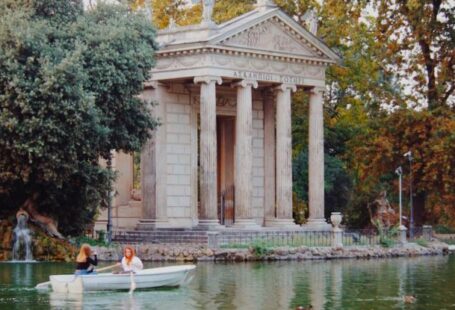The Ingenious Legacy of Roman Aqueducts
Since ancient times, the Roman aqueduct system has played a pivotal role in shaping the development and structure of cities across the vast Roman Empire. These magnificent feats of engineering not only provided a vital source of water for urban populations but also had a profound impact on urban planning, architecture, and social life. Let’s delve into how the Roman aqueduct system has left an indelible mark on the cities it served.
The Aqueducts: Engineering Marvels
The Roman aqueducts stand as a testament to the ingenuity and engineering prowess of the ancient Romans. These elaborate systems of channels, bridges, and tunnels were designed to transport water from distant sources to urban centers, ensuring a reliable supply of fresh water for public baths, fountains, and private homes. The sheer scale and complexity of these aqueducts are a reflection of the Romans’ commitment to innovation and efficiency in solving the challenges of urban water supply.
Urban Planning and Development
The presence of a reliable water supply through the aqueduct system had a transformative effect on the layout and development of Roman cities. The ability to bring water from distant sources allowed urban centers to grow and prosper, as populations could concentrate in areas where water was readily available. The aqueducts facilitated the construction of public buildings, baths, and ornate fountains, which became focal points of urban life and social interaction.
Architectural Influence
The Roman aqueducts not only provided water to the city but also served as iconic structures that shaped the architectural landscape of ancient Rome. The towering arches and massive stone structures of the aqueducts were not merely functional but also served as symbols of Roman power and engineering prowess. The aqueducts became integral parts of the urban fabric, with their imposing presence adding grandeur and character to the cities they served.
Social Life and Public Health
The availability of clean, fresh water brought by the aqueducts had a significant impact on the daily lives and well-being of Roman citizens. Access to public baths and fountains provided opportunities for social interaction and relaxation, fostering a sense of community and civic pride. Furthermore, the provision of clean water for drinking and sanitation helped improve public health and hygiene, reducing the spread of waterborne diseases and enhancing overall quality of life in urban centers.
Legacy and Continued Influence
Although many Roman aqueducts have fallen into disrepair over the centuries, their legacy continues to influence modern cities and urban planning. The concept of transporting water over long distances through engineered systems has endured, with modern cities around the world still relying on aqueducts and water distribution networks to meet the needs of growing populations. The Roman aqueduct system serves as a reminder of the importance of sustainable water management and infrastructure planning in creating livable and thriving cities.
In Conclusion: An Enduring Legacy
The Roman aqueduct system stands as a testament to the innovative spirit and engineering prowess of the ancient Romans. By harnessing the power of water and mastering the art of transportation, the Romans were able to shape their cities in ways that have left a lasting impact on urban development and architecture. The legacy of the Roman aqueducts lives on in the modern world, reminding us of the importance of thoughtful infrastructure planning and sustainable water management in creating vibrant and resilient cities.





